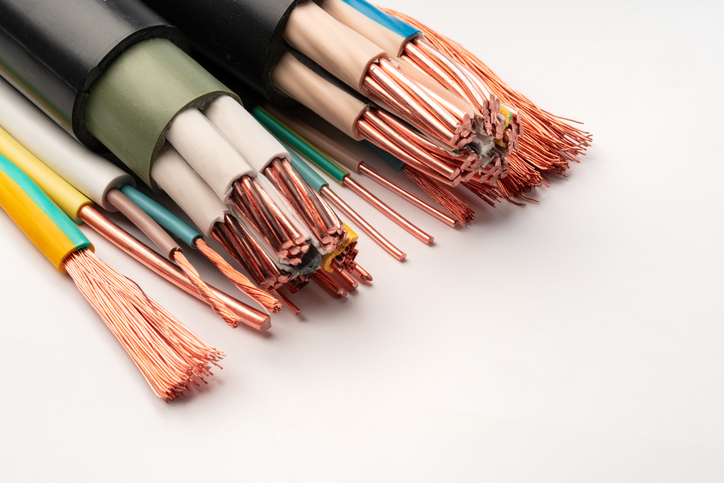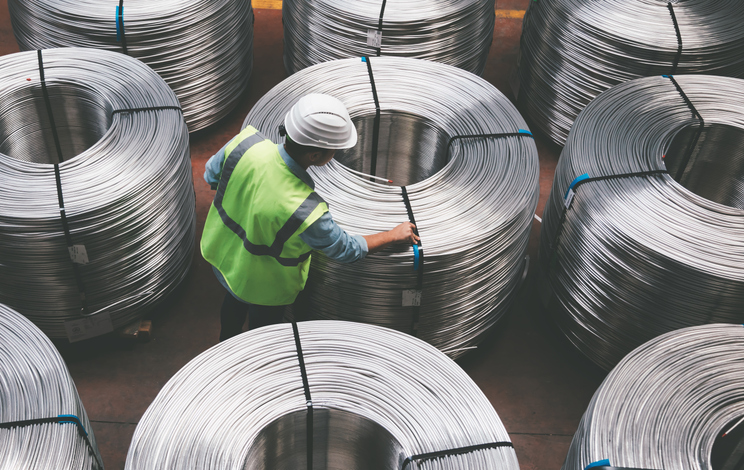Automotive Wire Management
No matter what the vehicle looks like on the outside, there are many commonalities inside. Some of the most critical components of any vehicle are wire and cable.
A lot is riding on those automotive wires and cables too. From the most minor job to high-tech automotive applications, wire and cable connect nearly everything within the vehicle. Not only that, but automotive wire and cable are subject to harsh environmental conditions, including temperature fluctuations, moisture, dirt, and other hazards.
Best practices in automotive engineering call for good automotive wire management to protect those wires and cables so they can offer optimal, reliable performance.
Automotive Wires and Cables: Critical Components
Many automotive cables and wires function to support multiple systems within the vehicle. So, when one wire or cable undergoes damage, numerous aspects of the vehicle are impacted. Whether in manufacturing or during repair, wires must be easily identifiable for a quick, accurate diagnostic analysis.
Because practically everything in a vehicle is connected by wires and cables, from the lights to fans to the more complex systems, wires, harnesses, and terminals must be of the highest quality. Wire for automotive use comes in many varieties and types, but it's crucial that your automotive wire management solutions can address and protect them all.
We can't overstate the importance of automotive cable management. Poorly managed cables and wires can lead to a variety of hazards that not only present a danger to the vehicle's performance but the safety of human operators and passengers.
Poor wire management can cause:
-
Short circuits
-
Fire hazards
-
Poor connections
-
Corrosion
-
Power loss
-
System degradation
If you want any vehicle to perform optimally, employing the best automotive cable solutions is crucial. Fortunately, at IEWC, we offer all the wire and cable solutions you need for proper automotive cable management. The solutions are simple, but they can make a critical difference in any vehicle's long-term safety and performance.
Automotive Cable Solutions
One of the most important rules is to choose the correct wire for automotive use—meaning, make sure you're always using a wire that's properly suited, rated, and made for the job at hand. Factors like the automotive wire gauge, insulation, and conductivity play a considerable role in how the wire will perform in an application.
In automotive applications, wire insulation is available in several types. The most common wire insulation is THHN or Thermoplastic High-Heat-Resistant Nylon. THHN for automotive applications is covered in a PVC coating. It’s used throughout many different markets and is a standard wire for simple applications, although it isn’t as flexible as some other options.
Other automotive wire insulations commonly used include PTFE or polytetrafluoroethylene insulation wire. PTFE is often used in electronics.
TXL, GXL, and SXL wires feature cross-link heat and chemical-resistant coverings. These high-strand wires feature different insulation thicknesses—TXL is the thinnest, GXL is mid-weight, and SXL features the thickest insulation.
But once you've selected the correct automotive grade wire for the job, there are specific cable and wire management tools that protect, organize, and help ensure the vehicle's optimal performance.
Automotive Wire Solutions
The most common automotive wire solutions provide ways to bundle, group, and organize the wire and cable. They include the following:
Cable Ties
Cable ties are used to secure groups or bundles of wires, hoses, cables, and other components. When you use cable ties to secure wire, they stay organized. Ties prevent wires and cables from hanging down, getting loose, damaged, or tangled.
Because these ties perform a vital function, it's essential that they're made of the proper material and the highest quality. At IEWC, we offer a vast selection of cable ties from many trusted manufacturers, including ACT Fastening, HellermannTyton, and Panduit (also available in bulk quantities for OEMs and large manufacturing operations).
Sleeving
Sleeving is a woven protective covering—it can provide heat shielding and resistance. There are many varieties of cable sleeving—coated, metal and shielding, and expandable options to serve many different applications. Wrappable sleeving is convenient for vehicle repairs and maintenance when cables and wires are already in place.
In automotive cable management, sleeving helps protect wire and cable bundles from hazards like high temperatures, abrasion, and debris. Sleeving also keeps cables and wires organized and easy to identify and locate.
Heat-Shrink Tubing
Slightly different than sleeving, heat-shrink, or electrical shrink tubing is used to insulate electrical wires and cables. Heat shrink tubing protects from abrasion, dirt, debris, and damage. It is also very useful for organizing wire bundles by keeping them well-managed and grouped together.
Many types of heat-shrink tubing are also color-coded, making identification simple and convenient. At IEWC, we carry heat-shrink tubing from top manufacturers like 3M, Canusa, Dunbar, Qualtek, and Sumitomo. We also have bulk heat-shrink tubing and non-shrink tubing options.
Convoluted Tubing
Convoluted tubing is also known as loom. This protective tubing has a high heat resistance; it protects wires and cables from abrasion, crushing damage, wear and tear.
Loom fits over bundles without requiring sealed fittings, making it convenient and easy to work with. We sell slit convoluted tubing fittings, as well as non-slit convoluted tubing.
Best Practices for Automotive Wire Management
Whenever you’re securing wire for automotive use, it’s important to use cable management solutions such as sleeves, tubing, and ties. Because wires and cables are such a significant part of any automotive application, keeping them protected and safe just makes sense.
Labeling wires clearly and using color coding to organize your wire management solutions can help ensure that future maintenance is simple. In addition, properly securing the wires and cable and routing them away from heat sources will keep them in optimal working condition for longer.
Perform regular wire maintenance. Check wires and cables for damage and ensure your cable management solutions are still in place and serving their purpose. Watch automotive wires for signs of wear and tear, and don't hesitate to replace them when necessary.
At IEWC, we have all the wire, cable, and automotive cable solutions you need for high-performance vehicles, repair, manufacturing, and more. If you have any questions about selecting the right wire or cable solution for your automotive application, please reach out. We can help you find the best answer for your automotive wire needs.
Related Resources

Automotive Industry Wiring Standards
The automotive industry has long relied on a set of standards to ensure the safety and reliability of vehicles.Read More
How to Choose the Right Wire or Cable
In selecting a wire or cable for an application, several factors should be considered. Learn More
Application & Selection Guide for Standard Product
Read more on the typical applications for standard wire and cable products.Read More


